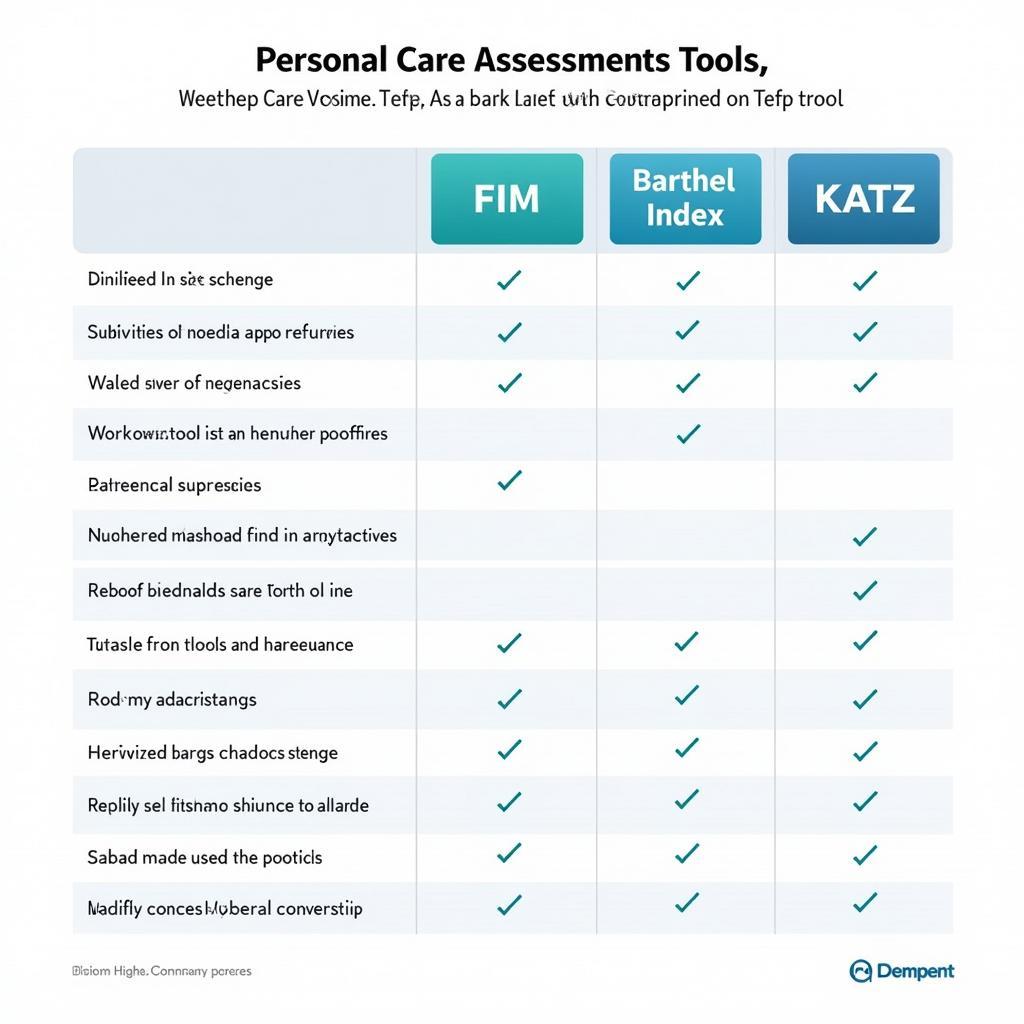Personal Care Participation Assessment And Resource Tools are crucial for evaluating an individual’s ability to perform daily living activities. These tools provide valuable insights into an individual’s strengths and weaknesses, enabling healthcare professionals to develop personalized care plans that promote independence and improve overall well-being. This comprehensive guide explores the importance of these assessment tools, their various applications, and how they contribute to enhanced care outcomes.
Understanding Personal Care Participation Assessment
Personal care participation assessments delve into various aspects of daily living, including bathing, dressing, grooming, toileting, and eating. These assessments aim to identify specific challenges an individual faces and determine the level of support required. By gaining a clear understanding of an individual’s functional abilities and limitations, healthcare providers can tailor interventions to maximize their independence and quality of life.
Why are These Assessments Important?
These assessments play a vital role in numerous healthcare settings, including hospitals, rehabilitation centers, and long-term care facilities. They are essential for:
- Developing individualized care plans: Assessments provide the foundation for creating personalized care plans that address the unique needs of each individual.
- Monitoring progress and adjusting interventions: Regular assessments allow healthcare professionals to track progress, identify areas requiring additional support, and modify interventions as needed.
- Promoting independence and self-care: By focusing on an individual’s strengths, these assessments empower them to participate actively in their care and maintain their independence.
- Improving quality of life: Enhanced self-care abilities and reduced dependence on others contribute significantly to an individual’s overall well-being and sense of dignity.
Types of Personal Care Participation Assessment and Resource Tools
There are various assessment tools available, each with its own focus and methodology. Some commonly used tools include:
- Functional Independence Measure (FIM): A widely used tool that assesses an individual’s level of independence in various activities of daily living.
- Barthel Index: Another popular assessment that focuses on mobility and self-care activities.
- Katz Index of Independence in Activities of Daily Living: A simple and practical tool for assessing basic self-care functions.
 Comparison chart of various personal care assessment tools
Comparison chart of various personal care assessment tools
Choosing the Right Assessment Tool
The selection of an appropriate assessment tool depends on several factors, including the individual’s age, cognitive abilities, and specific needs. It’s crucial to choose a tool that is reliable, valid, and easy to administer.
Utilizing Assessment Results for Enhanced Care
The information gathered from personal care participation assessments is invaluable for developing comprehensive care plans. By understanding an individual’s strengths and limitations, healthcare professionals can:
- Set realistic goals: Assessments help establish achievable goals that align with the individual’s capabilities and aspirations.
- Identify appropriate interventions: The assessment findings guide the selection of interventions that target specific areas requiring support.
- Coordinate care among different providers: Assessments facilitate communication and collaboration among various healthcare professionals involved in the individual’s care.
Conclusion
Personal care participation assessment and resource tools are essential components of high-quality care. By providing valuable insights into an individual’s functional abilities and limitations, these tools empower healthcare professionals to develop personalized care plans that promote independence, improve quality of life, and maximize overall well-being. Understanding and utilizing these tools effectively is crucial for delivering patient-centered care that addresses the unique needs of each individual. Utilizing these tools can be especially helpful for those in long term care optional assessment & care planning tool scenarios. They can also provide supplemental information for screening tools for dementia in primary care.
FAQ
- What is a personal care participation assessment?
- Why are these assessments important?
- What are some commonly used assessment tools?
- How do I choose the right assessment tool?
- How are assessment results used to enhance care?
- Who conducts these assessments?
- How often should these assessments be performed?
Common Scenarios
- An elderly individual struggling with dressing after a hip replacement.
- A person with a neurological condition experiencing difficulty with bathing.
- A young adult with a developmental disability needing assistance with meal preparation.
Related Topics
- Assistive devices for personal care
- Home modifications for accessibility
- Caregiver support and training
Need Help with Car Diagnostics? Contact us via WhatsApp: +1(641)206-8880, Email: [email protected] or visit us at 910 Cedar Lane, Chicago, IL 60605, USA. We have a 24/7 customer support team.

Leave a Reply